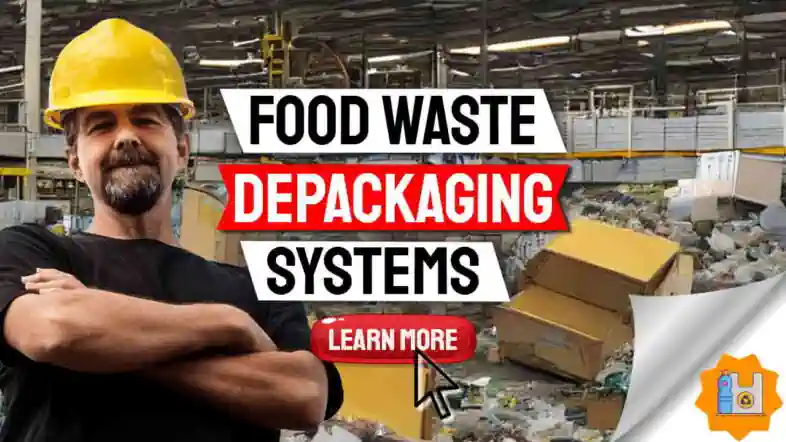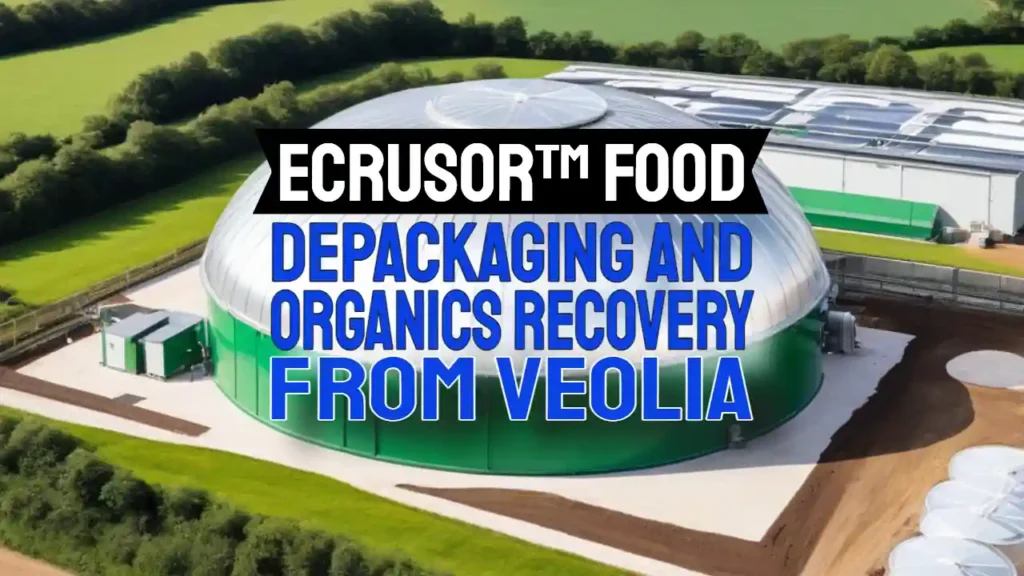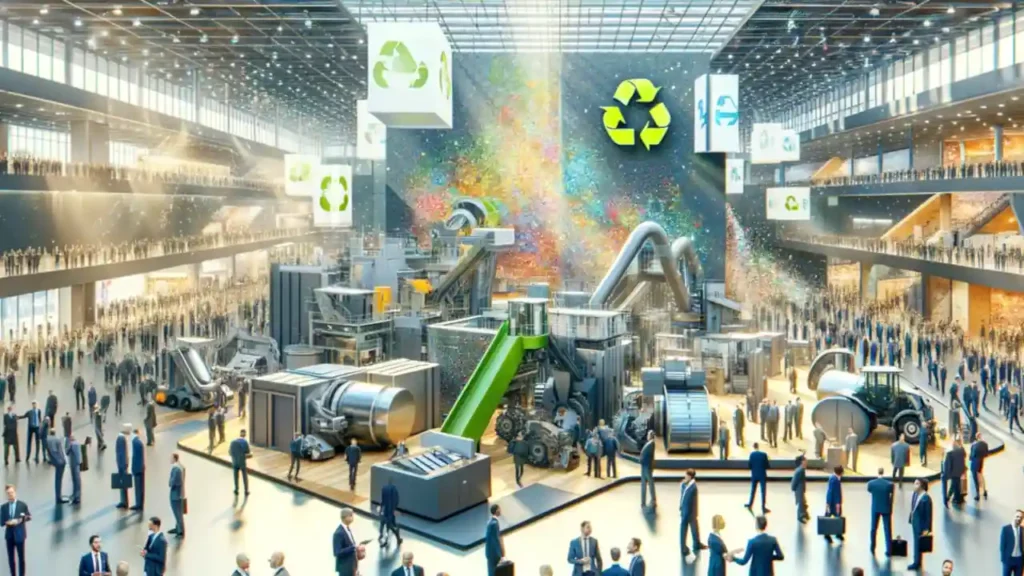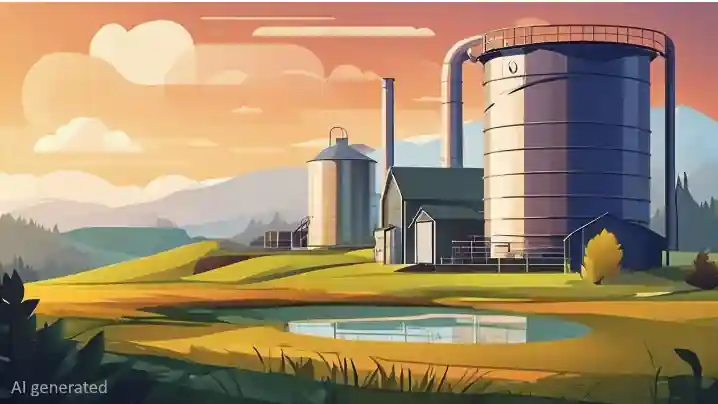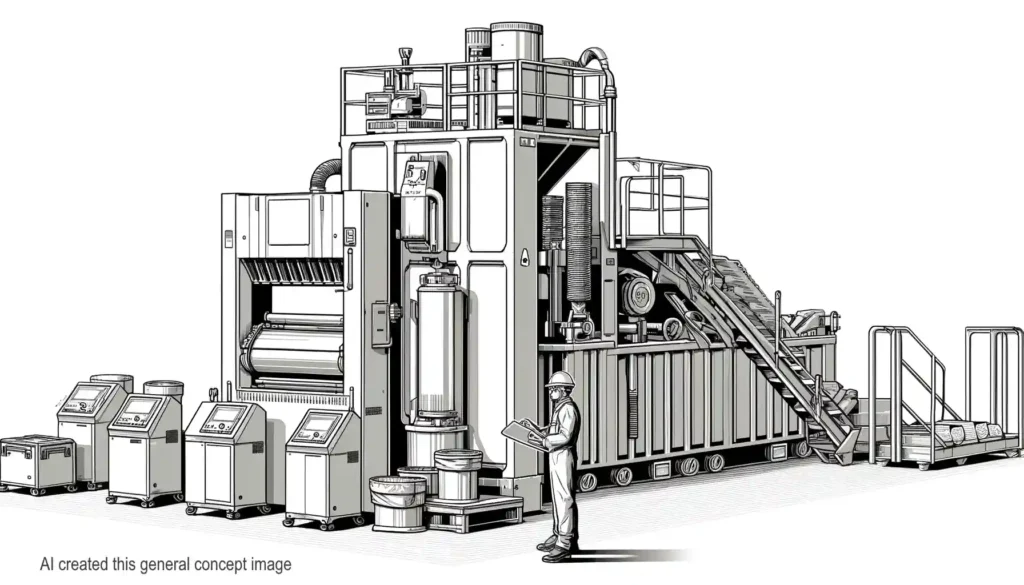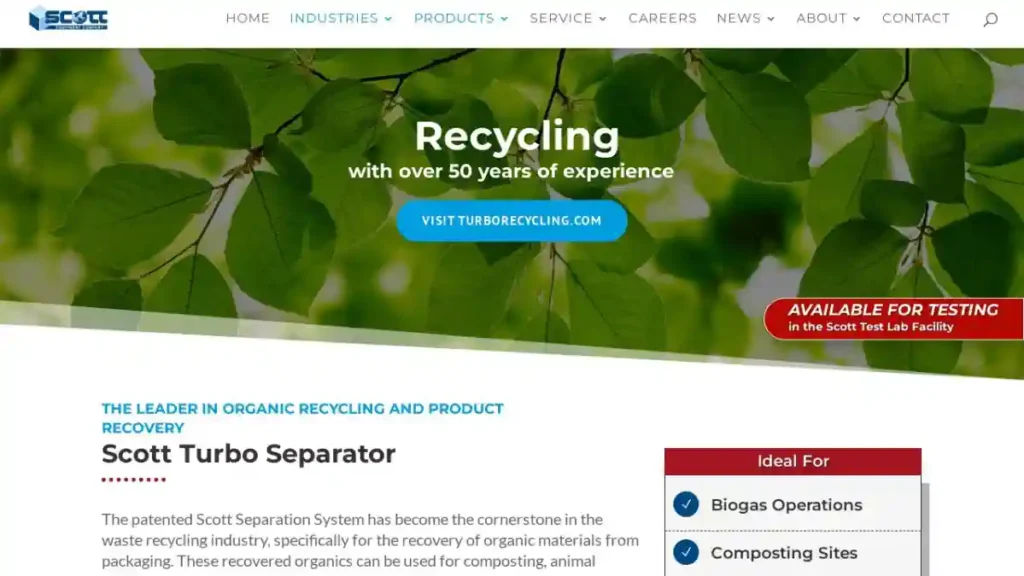Recycling can be tricky. Sometimes sorting machines mess up and mix different materials together. This makes recycling less effective.
Optical depackaging helps fix this. It uses special cameras and sensors to sort waste better. These machines are becoming more advanced every day.
This blog post will explain how new technology is making optical depackaging smarter and faster. You’ll see how it can improve recycling for many types of waste, like plastic, glass, and food scraps.
Ready to learn more?
Key Takeaways
- Better Sorting with Advanced Tech: New optical depackaging uses sensors and cameras to sort waste by colour, shape, size, and composition. This reduces sorting errors and increases recycling efficiency.
- AI and Machine Learning: AI-powered systems learn from mistakes over time. They adapt to different types of waste, improving both accuracy and speed in sorting processes.
- Hyperspectral Imaging and NIR Technology: Hyperspectral imaging identifies chemical compounds in materials; NIR technology distinguishes different plastics like PET from HDPE. These tools boost sorting precision.
- Economic Benefits: High-quality sorted recyclables mean fewer contaminants. Clean materials fetch better market prices, increasing profits for recycling plants.
- Environmental Impact: Better sorting accuracy leads to less waste in landfills. This helps lower pollution rates and supports sustainable waste management practices.
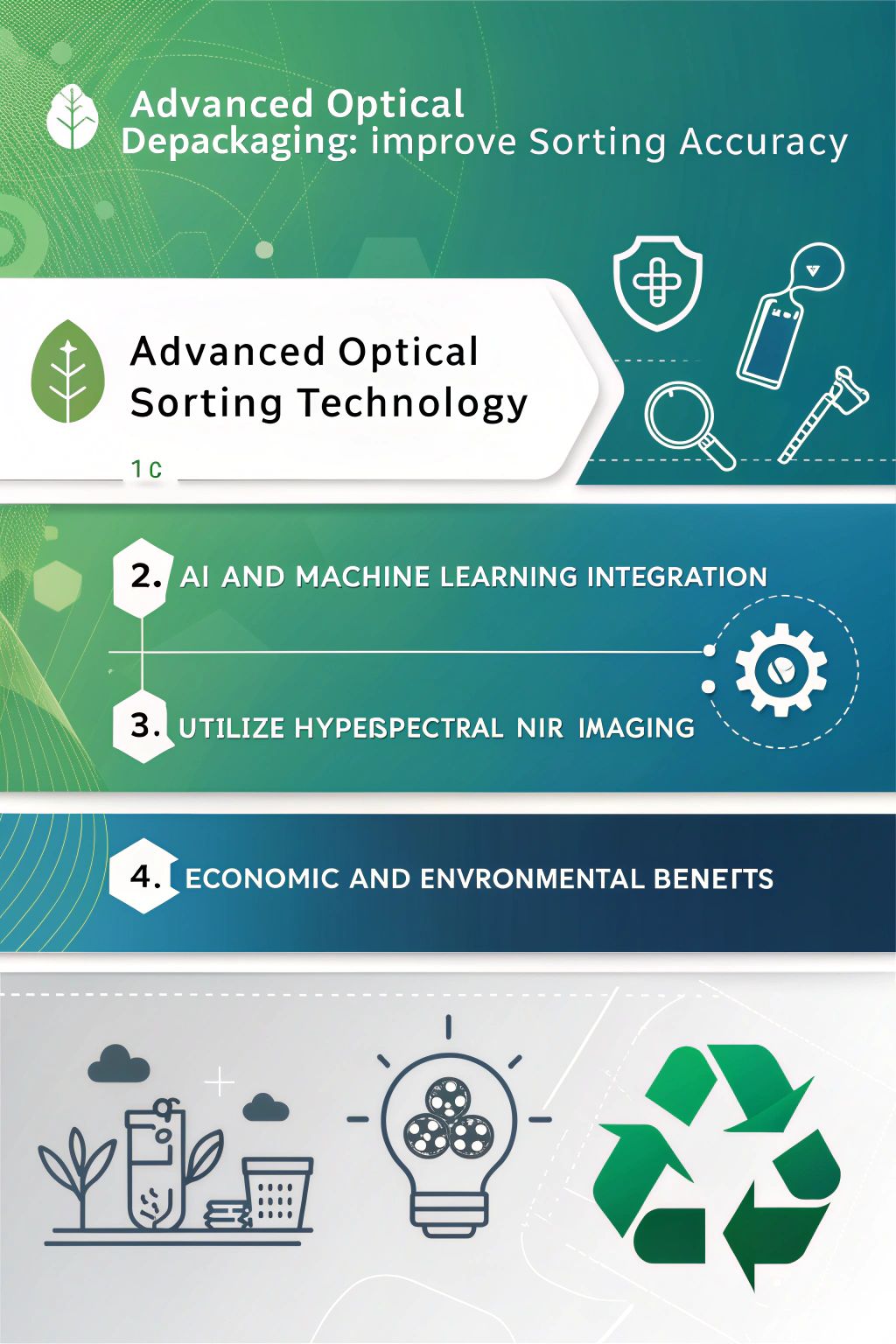
Current Challenges in Optical Sorting
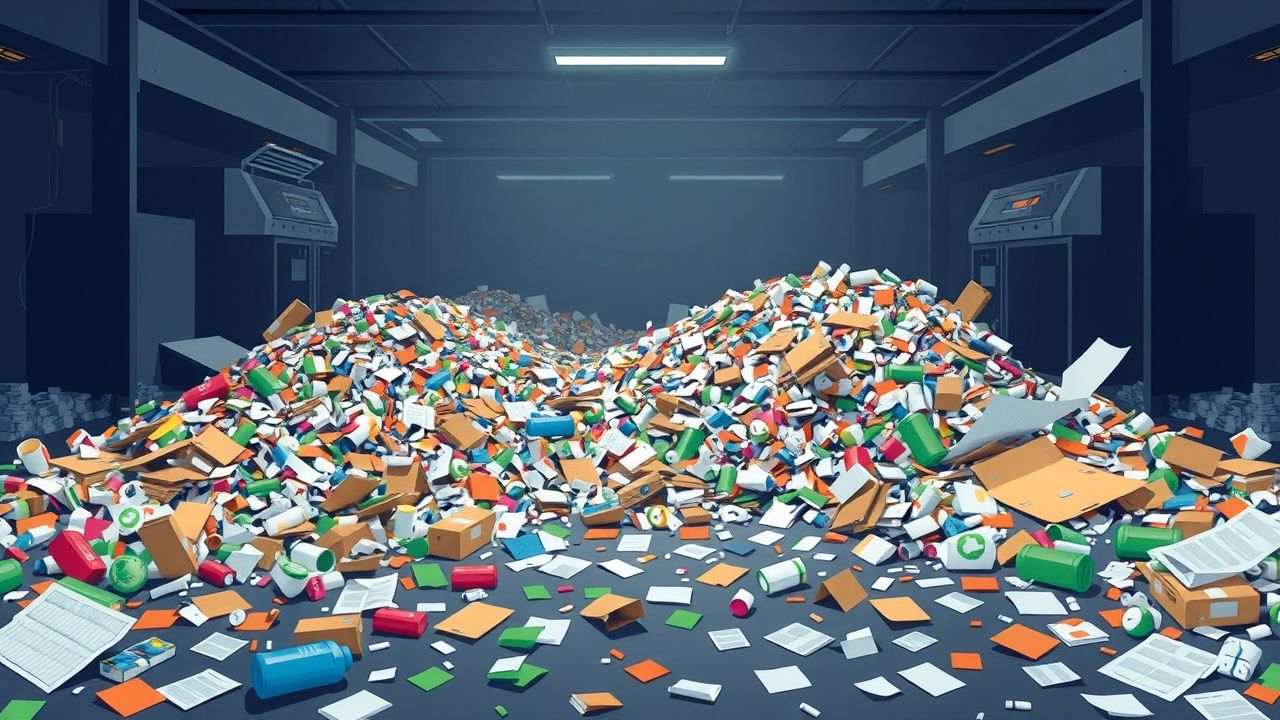
Optical sorting faces several hurdles. These include issues with identifying materials and managing processing speeds effectively… leading to high rates of errors.
Inaccuracy in material identification
In the past, workers had to sort waste by hand. This was slow and unsafe. Traditional conveyor belts and magnetic separators couldn’t spot all materials correctly.
Modern optical sorters use advanced sensors and cameras. They identify items based on colour, shape, size, and makeup. But issues in precision can still occur—leading to false positives or negatives.
This hampers recycling efficiency and increases sorting errors.
Slow processing speeds
Slow processing speeds in traditional sorting methods pose a big problem. They can’t handle large amounts of waste quickly, causing delays and higher costs. Modern optical sorters have made big strides here.
Newer systems use advanced technologies like near-infrared (NIR) technology and hyperspectral imaging. These tools scan materials faster, speeding up the whole process. “Continuous adjustments based on sorting results ensure optimal performance of the system.
High rates of false positives and negatives
In optical sorting, high rates of false positives and negatives cause huge problems. These errors lower the accuracy of sorting materials like plastics, metals, and organic waste. A false positive happens when an item gets wrongly sorted into a category it doesn’t belong to.
Conversely, a false negative occurs when a right item is missed.
Manual sorting tends to be subjective and often leads to these mistakes too. Automated systems can also struggle with this issue because they might misidentify materials based on colour or texture alone.
Improving technology helps but still faces challenges in detecting subtle differences in mixed waste streams accurately.
Evolution of Optical Sorting Technology
Optical sorting technology has transformed from simple manual methods to sophisticated automated systems. Over the years, advancements like hyperspectral imaging and near-infrared (NIR) technology have significantly improved sorting accuracy and speed.
From manual to automated sorting
Traditional sorting methods relied on humans. Workers manually separated materials, which was tiring and risky. This method posed health hazards and was time-consuming. Automated sorting solutions now handle these tasks, improving speed and safety.
Automated systems use sensors and cameras. They identify different types of waste quickly and accurately. These machines can sort plastics, metals, glass, paper—and more—faster than any human crew.
“Automation reduces errors while boosting efficiency,” says Dr Smith from the Recycling Institute.
Early optical technologies
Optical sorting began with basic technologies. Machines used simple light sensors to differentiate between items based on colour and brightness. These early systems improved from manual sorting but had limitations.
Basic sensors sometimes misclassified materials. They struggled to identify certain plastics or mixed waste streams accurately. False positives and negatives were common, reducing the efficiency of recycling processes, including plastic waste management.
Early machines also lacked speed, slowing down overall throughput in material recovery facilities (MRFs).
Recent advancements in precision and speed
Recent advancements in conveyor systems and sorting algorithms have significantly boosted precision and speed. These technologies now sort materials faster and with greater accuracy, reducing waste.
AI and machine learning play a crucial role here. They enable optical sorters to adapt over time, always improving their performance. This adaptive capability leads to fewer errors during the sorting process.
Next, we will delve into key technologies enhancing sorting accuracy…
Key Technologies Enhancing Sorting Accuracy
Multi-sensor integration and AI boost sorting accuracy. Discover how these technologies revolutionise recycling….
Multi-sensor integration
Combining cameras, near-infrared (NIR) sensors, and hyperspectral sensors greatly improves waste sorting. This method captures detailed data on the materials’ optical properties. It leads to better identification of different waste types.
For example, NIR technology can distinguish between clear PET plastic and coloured HDPE plastic. Hyperspectral imaging goes even further by identifying specific chemical compounds within the materials.
These technologies support more accurate sorting with less contamination in recyclables.
Advanced multi-sensor integration is a game-changer for sorting accuracy, says Dr Jane Smith from Green Tech Solutions.
Enhanced precision means fewer false positives and negatives. This boosts overall efficiency in recycling plants, minimising human error and reducing labour costs.
Artificial intelligence and machine learning
Artificial intelligence and machine learning boost optical sorting. These systems learn from past mistakes, making fewer errors over time. They can identify different materials better, ensuring high accuracy.
Machine learning models can handle various waste streams. This adaptability improves efficiency in recycling processes like plastic and food waste management. AI-powered systems work faster, increasing throughput and reducing downtime for recyclers.
Hyperspectral imaging
Hyperspectral imaging reads the chemical make-up of materials. This helps in sorting with high precision. The Specim FX50 hyperspectral camera can sort black plastics better than older systems.
By capturing data across many wavelengths, this technology sees what is invisible to the human eye. It ensures more accurate recycling and less waste contamination—leading to recent advancements in precision and speed…
now about Near-infrared (NIR) technology….
Near-infrared (NIR) technology
Near-infrared (NIR) technology helps sort plastic materials in waste management. This method uses light to identify different types of plastics. NIR can spot slight differences in the chemical makeup of items.
Sorting accuracy improves with NIR technology because it distinguishes between plastics like PET and HDPE effectively. Machines use this data to separate waste faster and more accurately, reducing errors and speeding up recycling processes.
Applications of Advanced Optical Sorting
Advanced optical sorting has transformed many industries. It boosts efficiency and accuracy across diverse waste management sectors.
Single-stream recycling
Single-stream recycling lets people place all their recyclables in one bin. This includes paper, plastic, glass, and metal. Optical sorters then automatically separate these mixed materials.
This system simplifies waste disposal for consumers and increases participation rates. However, it requires advanced technology to ensure accuracy in sorting. Near-infrared (NIR) and hyperspectral imaging greatly help with this task by identifying different material types quickly and correctly.
E-waste management
– Single-stream recycling
Advanced optical sorting also plays a crucial role in e-waste management. This technology automates the separation of valuable components, like metals and plastics, from electronic waste.
In doing so, it reduces human error and labour costs.
The use of multi-sensor integration boosts sorting accuracy by identifying different materials quickly. Sensors detect specific wavelengths reflected off objects to sort them correctly.
Enhanced precision and speed make the process more efficient, leading to higher-quality recyclables and a reduction in waste sent to landfills.
Construction and demolition waste sorting
Construction and demolition waste sorting can transform how we recycle. Optical sorting systems use advanced sensors to identify materials like concrete, wood, and metal. These sensors detect different optical properties.
This technology improves recycling efficiency. It separates waste into recyclable or reusable materials quickly. This reduces landfill use and conserves resources. Advanced systems also lower labour costs by reducing human error.
Plastic recycling
Advanced optical sorting boosts plastic recycling. It identifies and separates types like PET, HDPE, and PVC. This tech makes single-stream recycling faster. Sensors scan items on a conveyor belt.
Then, AI algorithms classify each piece.
Near-infrared (NIR) spectroscopy detects different plastics. Hyperspectral imaging adds more detail by capturing many wavelengths of light. These tools help reduce errors in sorting processes—leading to cleaner batches of materials for reuse.
…
– Food waste recovery
Food waste recovery
Food waste recovery is crucial for a sustainable future. AI-powered sorting systems can achieve 99% accuracy in sorting food waste. These systems use multi-sensor integration and near-infrared (NIR) technology to separate compostable plastics from other materials.
Hyperspectral imaging helps detect different types of waste. This reduces microplastic generation during the separation process, making recovery more efficient and eco-friendly. Advanced depackaging technologies ensure that valuable resources are not lost and lower contamination rates in recycling streams.
Impact of Advanced Optical Sorting on Recycling Efficiency
Advanced optical sorting enhances recycling efficiency by increasing throughput and reducing downtime. This results in higher purity of sorted materials, boosting the overall profitability of recycling operations.
Increased throughput and lower downtime
Optical sorting machines significantly increase throughput. They can sort thousands of items per minute without stopping. This high-speed performance boosts productivity in recycling plants.
The technology also cuts downtime. Machines work 24/7 without getting tired or distracted. Consistent operation helps keep the sorting line running smoothly, reducing interruptions for maintenance or human error.
Enhanced purity of sorted materials
Enhanced sorting accuracy reduces contamination, ensuring high-quality recycled materials. Advanced optical sorting technology enables precise detection and separation of various materials.
Multi-sensor integration helps identify different waste types more effectively. Near-infrared (NIR) technology also detects plastic types that are otherwise hard to sort.
Artificial intelligence plays a key role too. It learns from data to improve sorting decisions over time. This means fewer errors and higher purity in the sorted output. High-purity materials can be reused more efficiently, boosting both recycling rates and profitability for waste management companies.
Reduction in labor costs and human error
Optical sorting machines cut labour costs. They replace many tasks once done by hand. Workers can focus on other jobs that need human skill. This also decreases human error in sorting materials.
Sorting mistakes happen less often with these machines. Advanced algorithms and sensors identify materials more accurately than people do. As a result, recycling plants get cleaner batches of sorted items, which boosts their productivity and profits.
Enhanced safety is another benefit since workers spend less time near heavy machinery and moving parts—fewer accidents occur this way.
Integration of Digital Watermarking
7. Integration of Digital Watermarking: Adding digital watermarks can greatly improve the accuracy of sorting materials… Curious to learn more?
Concept of digital watermarking in sorting
Digital watermarking uses invisible codes on packaging. These codes hold info like SKU and material type. This helps with sorting because machines can read the watermarks fast.
In tests, prototypes that detect these watermarks had over 95% ejection rates. This means they correctly sorted more than 95 out of 100 items. Digital watermarking boost accuracy, making recycling more efficient.
Benefits of improved sorting accuracy
Using digital watermarks makes sorting more accurate. High-resolution cameras can read these marks quickly. This means fewer mistakes in identifying and separating materials.
Improved sorting accuracy boosts recycling rates. It ensures that more used plastic packaging gets recycled correctly. This process leads to cleaner recyclables, which are more valuable and profitable.
Better accuracy also reduces the need for human workers to sort waste manually. Machines can do it faster and with fewer errors, saving time and money.
Challenges in implementation
After realising the benefits of improved sorting accuracy, we must address some hurdles. Designing optical sorting systems with digital watermarking poses challenges. From choosing the right techniques to ensuring speed and efficiency, there are many factors to consider.
Industrial tests reveal certain trade-offs. While speed is crucial for efficiency, it can sometimes compromise accuracy. Real-world conditions add unpredictability, making validation complex.
Requirements analysis becomes hard due to varied waste streams and materials involved in recycling processes like anaerobic digestion and polylactic acid breakdown.
Clear guidelines help overcome these obstacles but do not eliminate them entirely…
AI-Based Innovations in Optical Sorting
Learning algorithms help sort materials better and faster. These systems can adapt to different types of waste, improving both efficiency and accuracy.
Learning algorithms for better material recognition
Learning algorithms, like those used in Pellenc’s CNS Brain product, offer great accuracy in sorting materials. They use deep learning and NIR technology to improve detection. This leads to better recycling rates.
These advanced systems adapt over time. They learn from mistakes and get smarter with each pass. Waste management professionals see fewer errors and faster processing speeds. This reduces downtime and increases throughput.
Adaptive systems for varied waste streams
Adaptive systems for varied waste streams use AI and machine learning. These tools help in sorting different types of materials accurately. Systems like Pellenc ST’s CNS BRAIN, powered by deep learning, can identify various materials quickly.
They adjust to new types of waste as they are introduced.
These adaptive systems handle e-waste, construction debris, and plastics effectively. They can even sort biodegradable packaging from regular plastic. This flexibility increases recycling efficiency across multiple waste streams…
leading to the next heading on enhanced user interfaces for operational efficiency.
Enhancements in user interfaces for operational efficiency
User interfaces in optical sorting systems have greatly improved. These new interfaces make machines easier to use and manage. Operators can now control multiple sites from one central location.
AI helps make decisions quickly. It improves efficiency by about 18 percent. This means less downtime and faster sorting times.
Touchscreen controls are common. They provide clear instructions and easy navigation. These screens show real-time data and alerts, making it simple to fix problems fast.
Such advancements reduce human error. They also cut down on labour costs, allowing for a smoother operation overall.
The Future Directions in Optical Sorting Technology
Future tech will amplify sorting accuracy using full-colour systems. They will merge with newer methods for even better results… promising a huge leap in waste management!
Potential for full-color sorting systems
Full-colour sorting systems offer new potential in waste management. These systems use advanced multispectral imaging to detect different colours accurately. This technology works well even in various lighting conditions.
AI integration further boosts efficiency by adapting to diverse materials. Full-colour sorting can separate recyclables more precisely, reducing contamination rates. Better sorting means higher-quality recyclables and less waste ending up in landfills.
Integration with other innovative technologies
Optical sorting systems now use IoT technology for real-time monitoring and control. They optimise the process from start to finish. Industry 4.0 promotes interconnectedness in these systems, ensuring better data analytics.
This lets waste management professionals enhance supply chain management with ease. Advanced tools, like neural networks and AI, further boost accuracy by learning from each batch of materials sorted.
Integrating NIR sensors helps identify different types of plastics quickly and accurately, reducing errors.
Predictions for technological advancements
Predictions for technological advancements include the integration of full-colour sorting systems. This will greatly improve accuracy in separating complex materials like various plastic resin types.
Such precision can boost recycling rates and reduce waste sent to landfills.
Near-infrared (NIR) technology will likely see more applications, making it easier to identify different materials during sorting processes. We may also expect better data analytics through Industry 4.0 adaptations, enhancing supply chain management and overall efficiency in waste management practices.
Environmental researchers, waste management professionals, and government officials should stay updated on these trends to leverage new technologies effectively. These advancements promise higher throughput and significant contributions to sustainable development goals.
Environmental and Economic Impacts of Improved Sorting Accuracy
Improved sorting accuracy reduces landfill waste, enhances the quality of recyclables, and boosts profits—learn how this impacts our future.
Reduction in waste sent to landfills
Advanced optical sorting helps reduce waste sent to landfills. Better sorting accuracy means more recyclables, like plastics, get properly processed. The Ellen MacArthur Foundation says this can cut plastic leakage by 50%.
With less waste in landfills, we lower environmental harm and make our recycling efforts more effective. Improved technologies—like AI and hyperspectral imaging—boost these results further.
This makes landfill reductions a win for both the planet and the economy.
Increased profitability from higher-quality recyclables
– Reduction in waste sent to landfills leads directly to increased profitability from higher-quality recyclables. High-quality sorting ensures fewer contaminants, improving the purity of recycled materials.
With modern optical sorting technology, contamination rates can drop from 20% to 5%. This means cleaner and more valuable recyclables. Higher purity reduces the need for extensive post-sorting cleaning processes.
Plus, high-quality materials fetch better prices in the recycling market. Better profits help fund more sustainable practices and advanced technologies needed for future improvements.
Contributions to sustainable waste management practices
Higher-quality recyclables boost profits. Advanced optical sorting helps to sort waste better, keeping more out of landfills and oceans.
Improved sorting tools like Near-infrared (NIR) technology and hyperspectral imaging make recycling more efficient. They reduce the amount of waste in seas and dumps. This adds value to recyclable materials while reducing pollution.
Conclusion
Advanced optical depackaging is changing waste sorting. It boosts accuracy and speed. With new technologies, we have better material recognition and less human error. Recycling plants now work faster and more efficiently.
This means a cleaner environment and higher profits from quality recyclables.
FAQs
1. What is advanced optical depackaging?
Advanced optical depackaging uses technologies like near infrared (NIR) spectroscopy and hyperspectral imaging to improve sorting accuracy of recyclable plastics.
2. How does this technology help in the recycling industry?
It enhances the identification and separation of materials, including biodegradable plastics and bioplastics, reducing contamination from microplastics.
3. Can it detect different types of plastic?
Yes, using techniques such as NIR reflectance and mid-infrared absorption, it can classify various types of plastics for better recycling outcomes.
4. What role do fluorescent markers play in this process?
Fluorescent markers aid in identifying specific materials under ultraviolet light, helping to sort them more accurately during recycling processes.
5. How does computer vision contribute to sorting accuracy?
Computer vision systems—like convolutional neural networks (CNNs)—analyse images for precise classification, improving efficiency in separating compostable materials from non-compostable ones.
6. Is advanced optical depackaging energy-efficient?
Yes, by implementing predictive maintenance and optimising energy consumption through targeted infrared radiation use, it supports a circular economy with lower environmental impact.
References
- https://www.researchgate.net/publication/372097765_Improving_Accuracy_of_Optical_Sorters_Using_Closed-Loop_Control_of_Material_Recirculation (2023-08-25)
- https://www.researchgate.net/publication/381511268_AUTOMATED_OPTICAL_SORTING_MACHINES_FOR_FOOD_INDUSTRY (2024-06-18)
- https://tongengineering.com/latest-news/advanced-optical-sorter/
- https://www.mdpi.com/2313-4321/7/2/11
- https://www.peaks-eco.com/news/the-evolution-of-optical-sorting-in-waste-recycling-447.html
- https://meyer-corp.eu/article/what-is-optical-sorting-and-how-it-works/
- https://picvisa.com/evolution-optical-sorting-waste-recycling-picvisa/
- https://www.specim.com/overcoming-black-plastic-recycling-challenge-with-mwir-hyperspectral-imaging-technology/ (2024-10-17)
- https://plasticsrecycling.org/documents/res-sort-01/ (2023-05-25)
- https://recyclinginside.com/recycling-technology/separation-and-sorting-technology/innovations-in-advanced-sorting-technologies-for-recyclable-materials/ (2024-01-26)
- https://elegantlyorganic.co.uk/top-technologies-in-food-waste-separation/
- https://solidequip.com/the-benefits-of-optical-sorting-machines-in-the-recycling-industry/
- https://meyer-corp.eu/article/how-optical-sorting-machines-revolutionize-bottle-and-can-recycling/ (2024-10-29)
- https://www.digitalwatermarks.eu/
- https://www.borealiseverminds.com/post/holygrail-2-0-revolutionising-sorting-and-recycling-with-digital-watermarks (2021-03-31)
- https://www.researchgate.net/publication/26532490_Practical_Challenges_for_Digital_Watermarking_Applications
- https://www.recycling-magazine.com/2024/09/16/optimize-paper-sorting-with-ai/
- https://packagingeurope.com/news/ai-solution-from-pellenc-st-uses-deep-learning-to-accurately-sort-paper-waste/11881.article
- https://www.tomra.com/en/waste-metal-recycling/media-center/news/2024/tomra-to-feature-latest-ai-plastic-and-flake-sorting-at-npe-2024 (2024-04-24)
- https://www.techik.net/a-news-what-is-the-future-of-optical-sorting-technology (2023-11-28)
- https://meyer-corp.eu/article/improving-recycled-pet-quality-with-optical-sorting/ (2024-10-30)
- https://www.envacgroup.com/insight/optical-waste-sorting-a-modern-solution-for-sustainable-recycling/
- https://www.researchgate.net/publication/380471424_Smart_waste_management_A_paradigm_shift_enabled_by_artificial_intelligence (2024-10-22)
Discover more from IPPTS Depackaging Equipment Insights
Subscribe to get the latest posts sent to your email.


